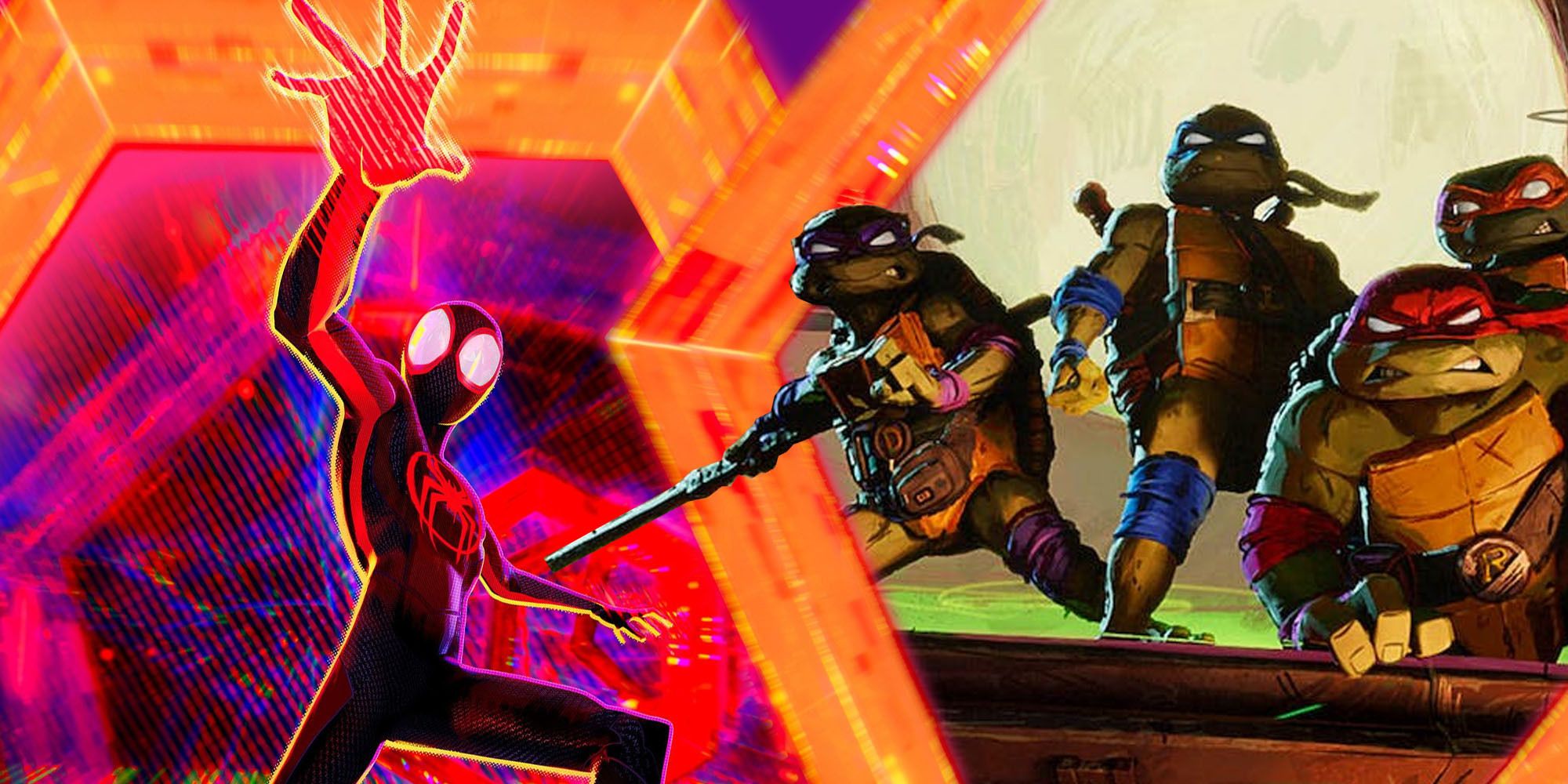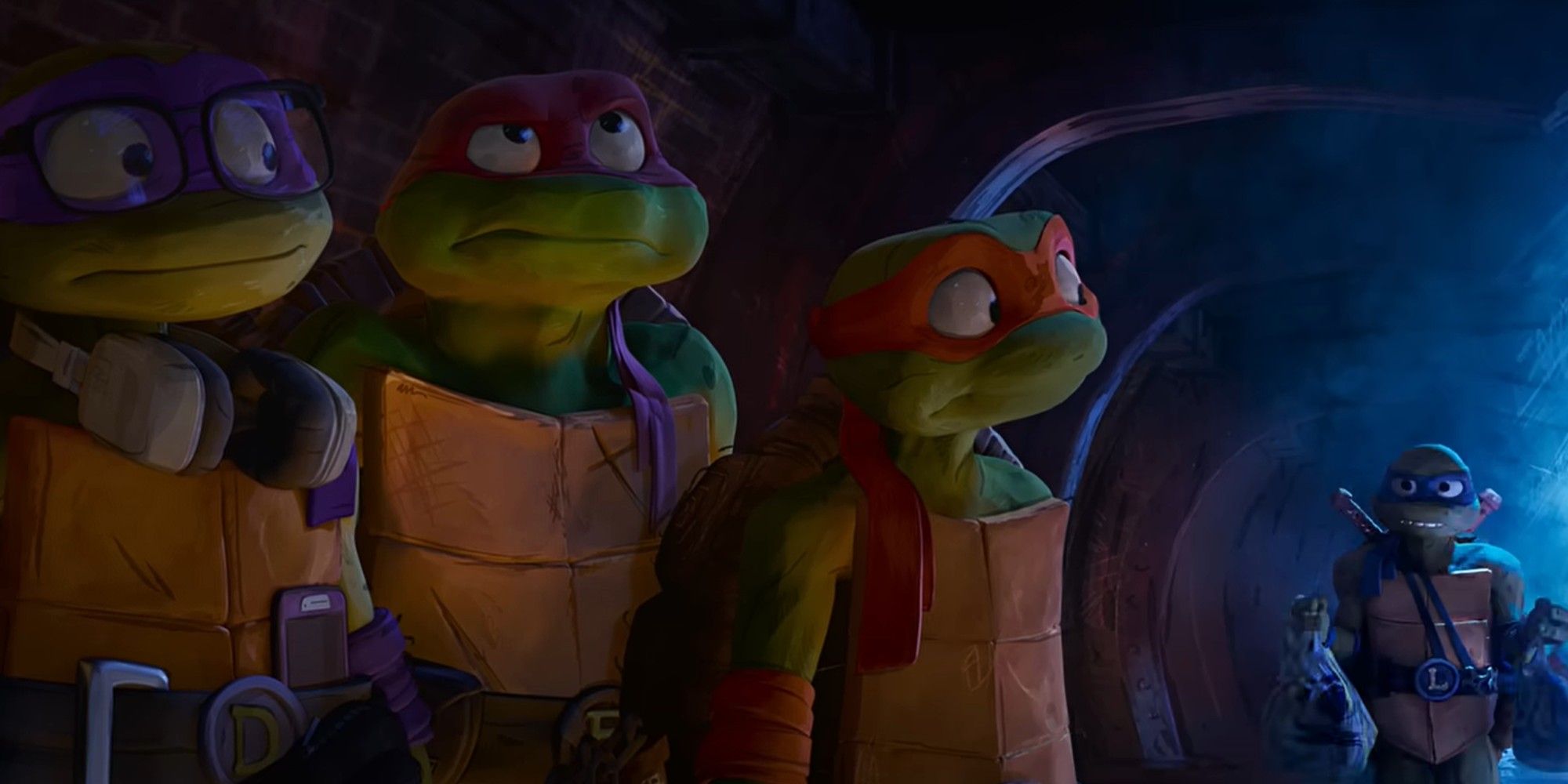Teenage Mutant Ninja Turtles: Mutant Mayhem looks great. The new trailer dropped earlier this week, and of all the IP-driven movies heading to theaters this summer, it’s by far the one that I’m most excited to see. We get a new superhero movie just about every month, but the last TMNT movie hit theaters all the way back in 2016. While we constantly get updates on popular characters like Spider-Man and Batman, the Turtles have only had one movie iteration per decade since the '90s. Each shows us a little bit about where moviemaking trends were for that moment in time.
At first, the Turtles' theatrical releases followed in Batman’s bootsteps. Released in 1990, the first Teenage Mutant Ninja Turtles movie hit the big screen less than a year after Tim Burton’s take on the Caped Crusader, and you can already feel the reverberations of that mega hit. Big city sets, moody lighting, shadowy palettes, rubbery costumes — the first Turtles feels like a direct response to Burton’s gothic take on children’s entertainment. Other movies in the same vein followed shortly after: Teenage Mutant Ninja Turtles 2: The Secret of the Ooze in 1991 and Teenage Mutant Ninja Turtles in 1993. Each maintains the moody aesthetic, which it shares with Batman’s other early ‘90s offspring: Dick Tracy (1990), Darkman (1990), and Super Mario Bros. (1993).
When the Turtles came back to theaters in the 2000s, they were following the trend toward computer-generated animated movies. Pixar and DreamWorks had popularized the take on the medium in the ‘90s and ‘00s leading to its widespread adoption for children's films and TV, and, by and large, the death of hand drawn animated feature films in the United States. TMNT (2007) emerged from that changing medium, and bears the same aesthetic markers of a lot of video games coming out in the post-9/11 era, with the overcast, slightly dreary look that was common in games of that era like the Call of Duty and Gears of War series, Fallout 3, and Resident Evil 5.
When the Turtles emerged from their shells for a pair of live-action movies in the 2010s, it was easy to see the difference that 20 years had made to the style of the IP-driven blockbuster. Whereas the early Turtles movies were influenced by Burton, the new Turtles movies were influenced by Bayhem. Michael Bay, the kinetic action filmmaker behind the first five movies in the Transformers series, served as a producer on Teenage Mutant Ninja Turtles (2014) and Teenage Mutant Ninja Turtles: Out of the Shadows (2016). The movies look like Bay products, with monstrously muscular computer-generated turtles in the lead roles, flashy CGI action scenes, and a palette with plenty of orange and blue.
The turtles have been hibernating for seven years, but they’re finally back on August 2 for Mutant Mayhem. The movie has the best aesthetic the series has had since the ‘90s, but like all the movies that have come before, it’s chasing trends, not setting them. Like Puss in Boots: The Last Wish, Entergalactic, and Turning Red, Mutant Mayhem has a more expressive style, borrowing from Spider-Man: Into the Spider-Verse. The movie's take on the Turtles from a story perspective, which emphasizes their youth more than previous entries have, does feel new. But it's situated in an art style that isn't breaking new ground.
That's okay. The Spider-Verse style works for the Turtles, given their comic book origins just like the moody '90s aesthetic effectively captured the feel of the city and their underground lair. These movies don't need to look new, necessarily, as long as the look matches the filmmakers' interpretation of the characters. For a high-energy action movie about teenage superheroes, the Spider-Verse look is just right.


